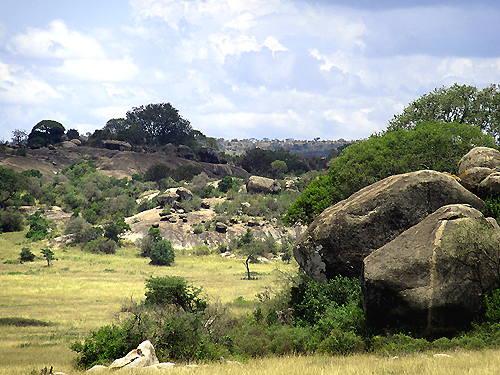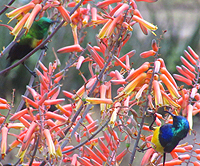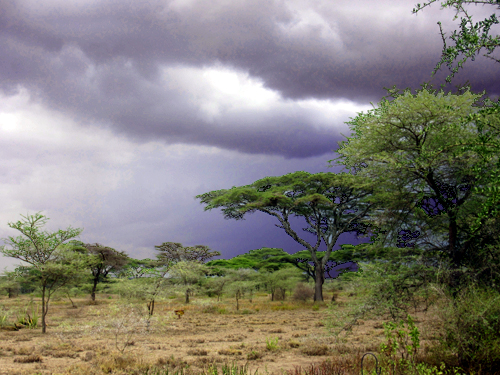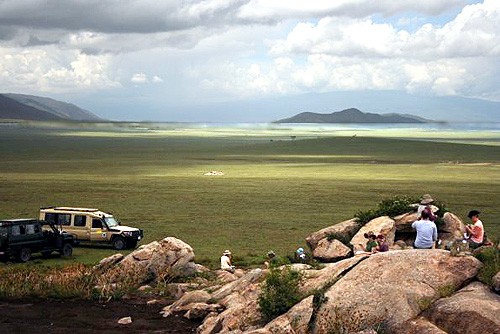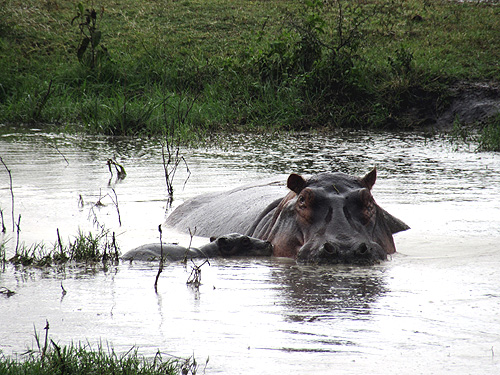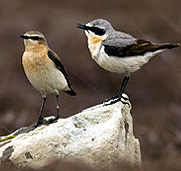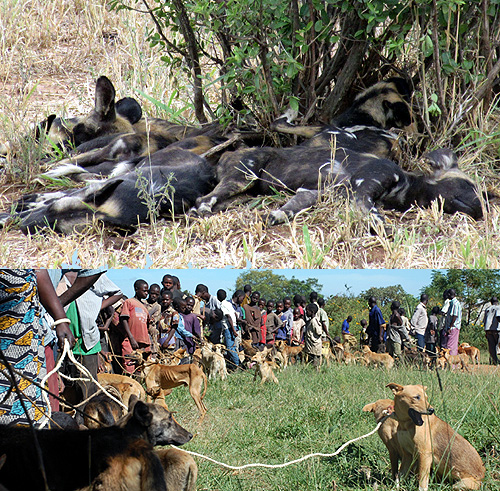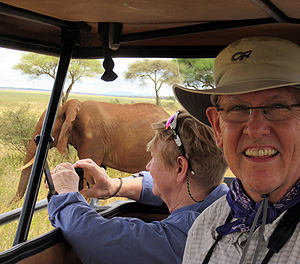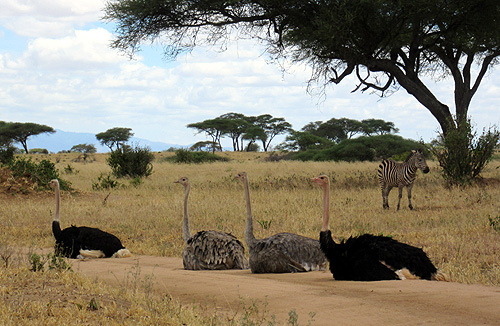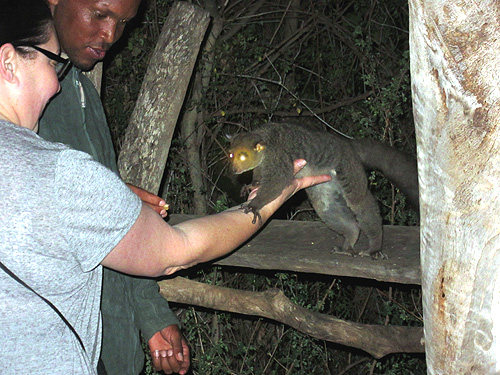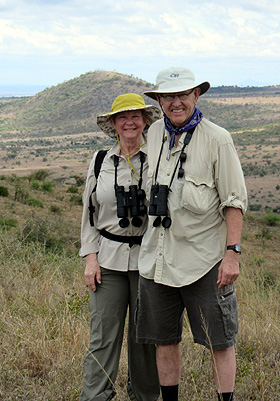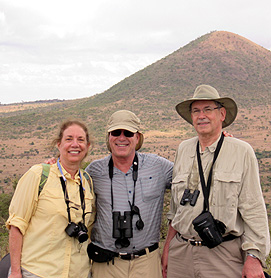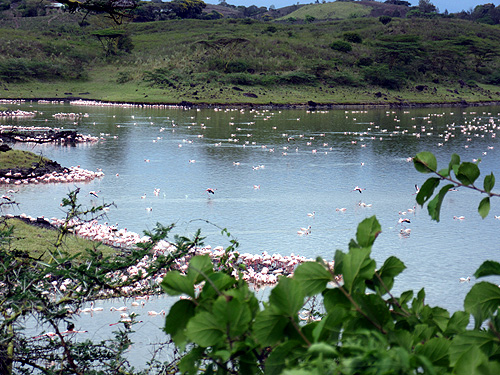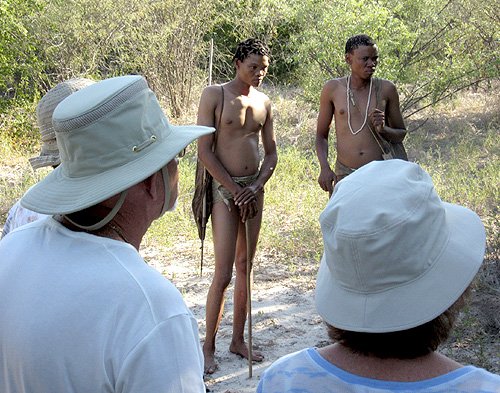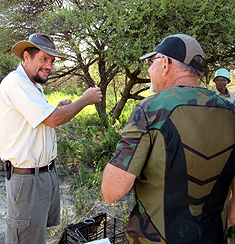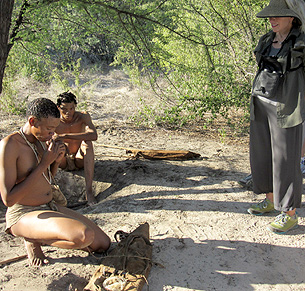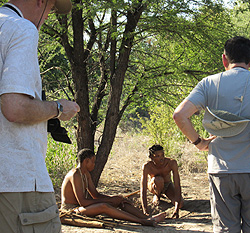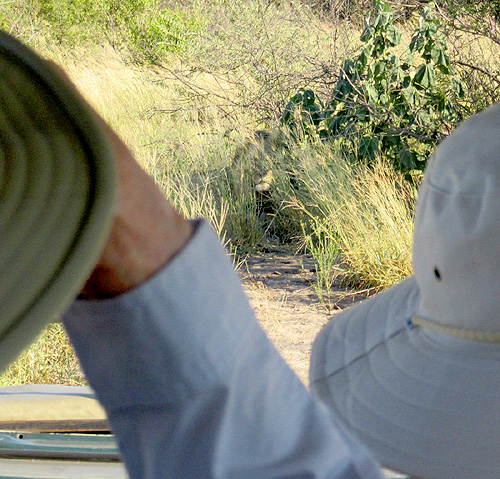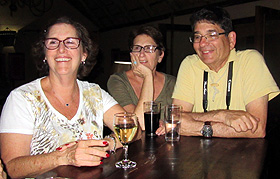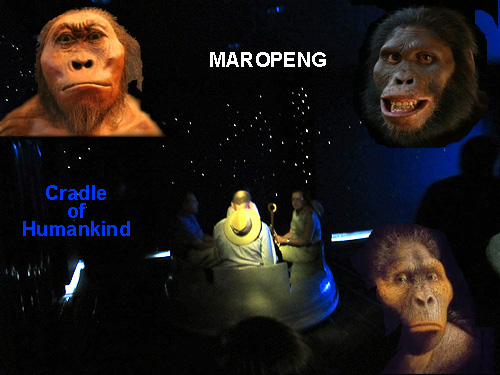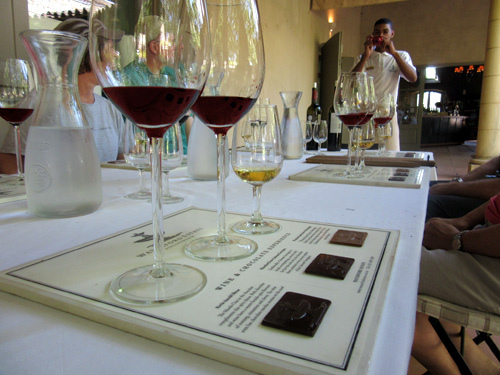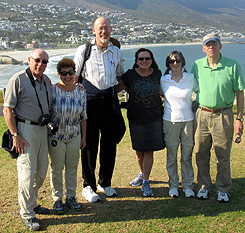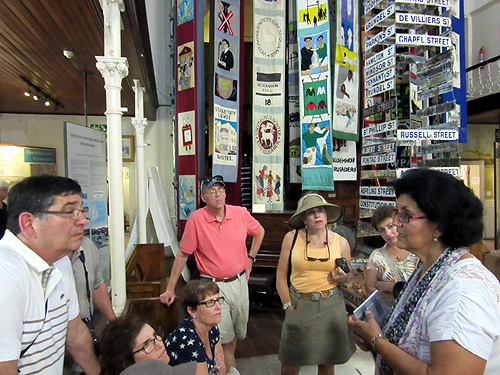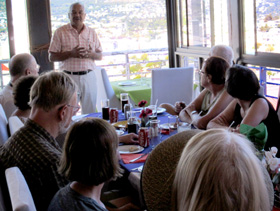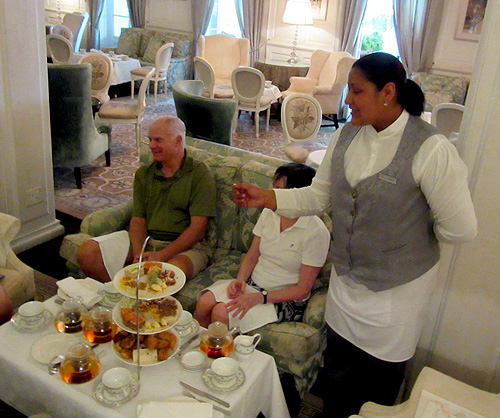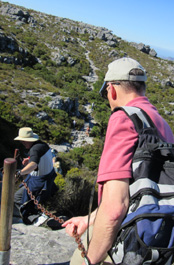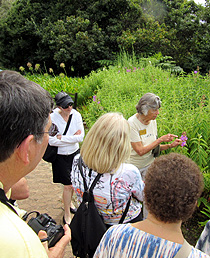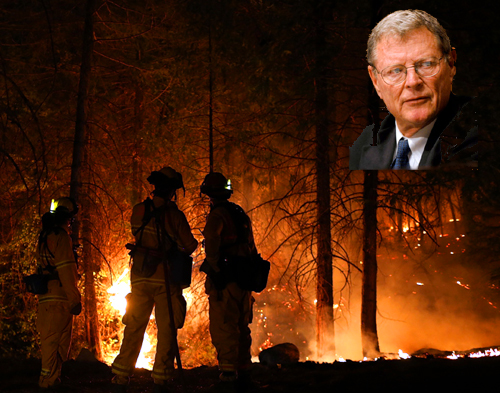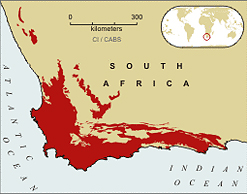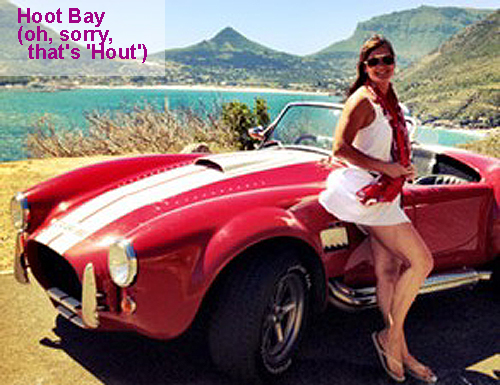 Twenty-four lions and 4 cheetah as we moved from the southwest of the Serengeti into its center.
Twenty-four lions and 4 cheetah as we moved from the southwest of the Serengeti into its center.
It was a fabulous day but the veld’s condition continues to disappoint. Despite the heavy rains that we’ve experienced the last several days, it’s so obvious there had been a long period of drought.
There is a patina of green everywhere, but as we move north it becomes less and less. At Naabi Hill there seemed to be a clear divide and we climbed the hill for a better look.
Sure enough, south of Naabi the green was more intense. North of Naabi it was still very dry looking.
I would have liked to stay up atop the hill longer, but Tumaini shouted up that there were lion on the path, so we all scurried down.
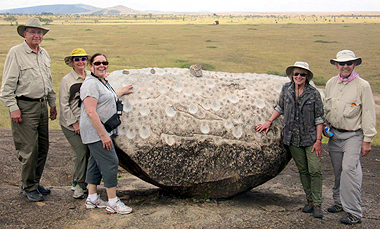
And lion dominated the rest of the day. We went first to the sacred cave paintings of the Maasai in the Moru Kopjes, where I explained the traditional morani’s matriculation from just being circumcised. There really aren’t many traditional Maasai anymore, but I remain so sad that these paintings of such historical importance aren’t being preserved.
Several times, by the way, I’ve been foiled taking people to the paintings by lion!
Then we went to the Ngong Singing Rock where I talked about the terrible shaft the Maasai have received probably for a thousand years. This was the rock where the last of the forced Maasai evictions took place in 1972.
Even today the government is talking about further evictions.

We left lunch and Ngong Rock on a tip about a buffalo kill by lion. We had seen innumerable Grant’s gazelle and hyaena, a family of four cheetah, lots of buffalo and lots of giraffe, so the group was anxious for beige fur.
We couldn’t find the kill, so we gave up and decided to take a short cut towards our camp. Alas, destiny was in control, and we came across a family of three females with three sets of cubs, 15 in all. The blood on their faces was a clear indication they had made the kill.
They were hyperventilating so fast. Lyle clocked them at 90 breaths/minute. And the two mothers on which cubs tried to nurse would have none of such nonetheless, growling at them and knocking them away. It had been a hard day!
We left the lion, hightailed it to our camp, saw more elephant, more giraffe and who knows how many more lion, at least two more prides of and one mating pair.
We also spent the day gathering information. I dare to say we think we know where the migration is. Tune in tomorrow to see if we’re right!
